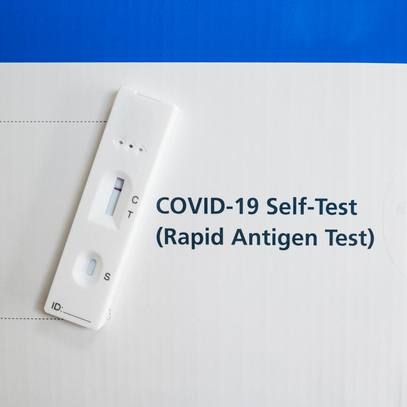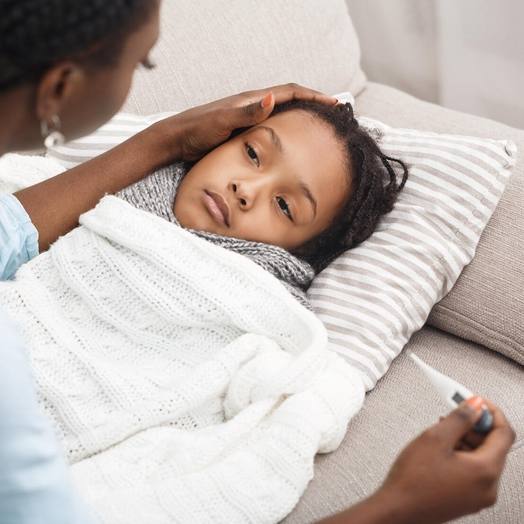
COVID-19 (coronavirus) and the flu have many similarities and differences. Testing may be done to see if you have COVID-19 or the flu. You can also have both diseases at the same time. Find out what to know and how to protect yourself from these diseases.
_________________________________
During the COVID-19 pandemic, you may have heard that coronavirus disease 2019 (COVID-19) is similar to the flu (influenza). COVID-19 and the flu are both contagious respiratory diseases caused by viruses. They have some common symptoms. But through closer comparison, they can affect people differently. Also, since the flu has been around much longer, doctors know more about how to treat and prevent it, while they continue to learn more about COVID-19.
How are COVID-19 and the flu similar?
The viruses that cause COVID-19 and the flu spread in similar ways. They can both spread between people who are in close contact (within 6 feet, or 2 meters). The viruses spread through respiratory droplets or aerosols released through talking, sneezing or coughing. These droplets can land in the mouth or nose of someone nearby or be inhaled. These viruses can also spread if a person touches a surface with one of the viruses on it and then touches his or her mouth, nose or eyes.
COVID-19 and the flu have many signs and symptoms in common, including:
- Fever
- Cough
- Shortness of breath or difficulty breathing
- Tiredness
- Sore throat
- Runny or stuffy nose
- Muscle aches
- Headache
- Nausea or vomiting, but this is more common in children than in adults
The signs and symptoms of both diseases can range from no symptoms to mild or severe symptoms. Because COVID-19 and the flu have similar symptoms, it can be hard to diagnose which condition you have based on your symptoms alone. Testing may be done to see if you have COVID-19 or the flu. You can also have both diseases at the same time.
Both COVID-19 and the flu can lead to serious complications, such as pneumonia, acute respiratory distress syndrome, organ failure, heart attacks, heart or brain inflammation, stroke, and death.
Many people with the flu or mild symptoms of COVID-19 can recover at home with rest and fluids. But some people become seriously ill from the flu or COVID-19 and need to stay in the hospital.
What's the difference between COVID-19 and the flu?
COVID-19 and the flu have several differences. COVID-19 and the flu are caused by different viruses. COVID-19 is caused by a new coronavirus called SARS-CoV-2, while influenza is caused by influenza A and B viruses.
Symptoms of COVID-19 and the flu appear at different times and have some differences. With COVID-19, you may experience loss of taste or smell. COVID-19 symptoms generally appear two to 14 days after exposure. Flu symptoms usually appear about one to four days after exposure. COVID-19 appears to be more contagious and to spread more quickly than the flu. Severe illness such as lung injury may be more frequent with COVID-19 than with influenza. The mortality rate also appears to be higher with COVID-19 than the flu.
COVID-19 can cause different complications from the flu, such as blood clots and multisystem inflammatory syndrome in children.
Another difference is that the flu can be treated with antiviral drugs. No antiviral drugs are currently approved to treat COVID-19. Researchers are evaluating many drugs and treatments for COVID-19. Some drugs may help reduce the severity of COVID-19.
You can get an annual flu vaccine to help reduce your risk of the flu. The flu vaccine can also reduce the severity of the flu and the risk of serious complications. Each year's flu vaccine provides protection from the three or four influenza viruses that are expected to be the most common during that year's flu season. The vaccine can be given as a shot (injection) or as a nasal spray.
The flu vaccine doesn't protect you from getting COVID-19. Research also shows that getting the flu vaccine does not make you more likely to get COVID-19 or other respiratory infections.
No vaccine is currently available for the virus that causes COVID-19. But researchers are working to develop vaccines to prevent COVID-19.
How may COVID-19 affect this year's flu season?
Flu season in North America typically occurs between October and May. It's possible that the viruses that cause COVID-19 and the flu may spread in your community at the same time during the flu season. If this happens, people could become ill with one or both diseases at the same time. Testing can determine which virus you may have and help guide doctors to the appropriate treatment. People who become seriously ill from either disease may need to stay in the hospital at the same time, which could cause the hospitals to become full.
How can you avoid getting COVID-19 and the flu?
The good news is you can take the same steps to reduce your risk of infection from the viruses that cause COVID-19, the flu and other respiratory infections by following several standard precautions. In fact, some research has found that following these measures, such as social distancing and wearing a face mask, may have helped shorten the length of the flu season and lessened the number of people affected in the 2019-2020 flu season.
Standard precautions to reduce your risk of COVID-19, the flu and other respiratory infections include:
- Avoiding large events and mass gatherings
- Avoiding close contact (within 6 feet, or 2 meters) with anyone outside your household, especially if you have a higher risk of serious illness
- Washing your hands often with soap and water for at least 20 seconds, or using an alcohol-based hand sanitizer that contains at least 60% alcohol
- Wearing a cloth face mask when you're in public spaces, such as the grocery store, where it's difficult to avoid close contact with others
- Covering your mouth and nose with your elbow or a tissue when you cough or sneeze
- Avoiding touching your eyes, nose and mouth
- Cleaning and disinfecting high-touch surfaces, such as doorknobs, light switches, electronics and counters, daily
Taking these prevention measures can help you stay healthy and reduce your risk of becoming ill with COVID-19 or the flu.
This article is written by Mayo Clinic Staff. Find more health and medical information on mayoclinic.org.
Information in this post was accurate at the time of its posting. Due to the fluid nature of the COVID-19 pandemic, scientific understanding, along with guidelines and recommendations, may have changed since the original publication date.
Check the Centers for Disease Control and Prevention website for additional updates on COVID-19. For more information and all your COVID-19 coverage, go to the Mayo Clinic News Network and mayoclinic.org.







